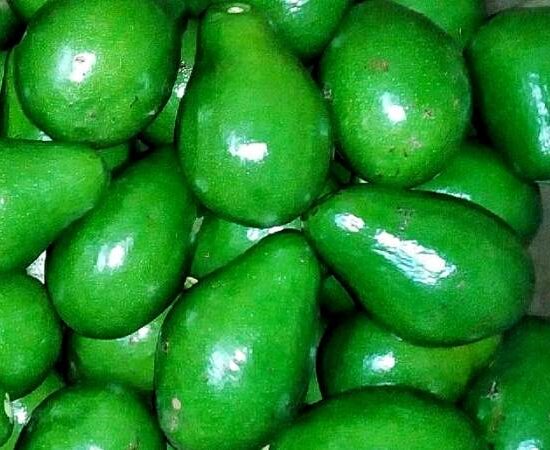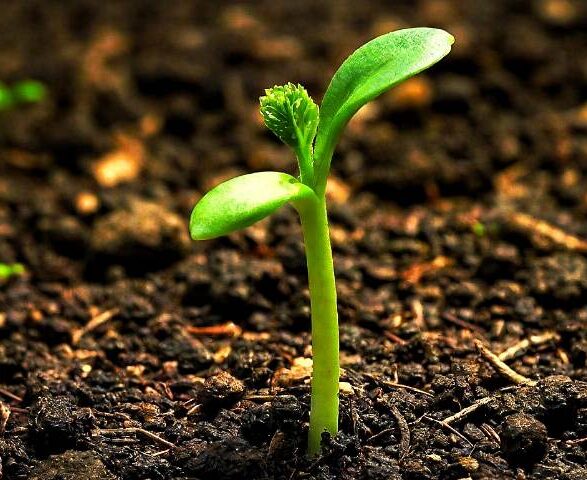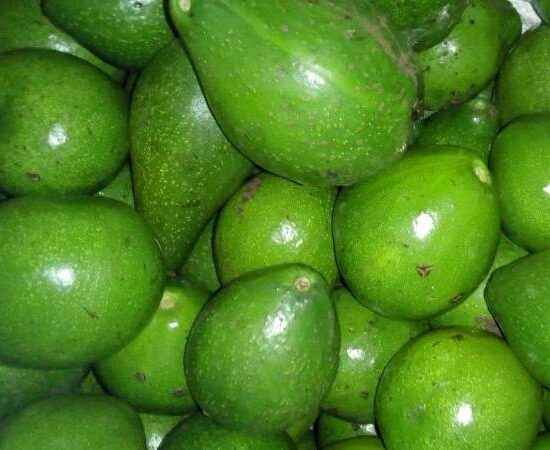🥑 Unveiling the Secrets of Avocado Cultivation in India: A Comprehensive Guide for the Discerning Gardener 🥑
Elevate Your Garden with the Exquisite Allure of Homegrown Avocados
Table Of Content
1. INTRODUCTION:
• THIS COMPREHENSIVE GUIDE: YOUR PATH TO AVOCADO MASTERY:
2. AVOCADO VARIETIES: A WORLD OF FLAVOR AND DIVERSITY
• MAJOR RACES:
• POPULAR INDIAN VARIETIES:
• CHOOSING THE RIGHT VARIETY:
3. THE FASCINATING WORLD OF AVOCADO FLOWERS: A DANCE OF DICHOGAMY
• PROTOGYNOUS DICHOGAMY: THE AVOCADO’S UNIQUE RHYTHM
• TYPE A AND TYPE B FLOWERING: A CHOREOGRAPHED DUET
• THE IMPORTANCE OF CROSS-POLLINATION:
• ADDRESSING POLLINATION CHALLENGES IN SINGLE-VARIETY PLANTINGS:
4. POLLINATION: THE KEY TO A BOUNTIFUL AVOCADO HARVEST
• THE ROLE OF POLLINATORS:
• STRATEGIES FOR SUCCESSFUL POLLINATION:
• INNOVATIVE POLLINATION METHODS FOR SINGLE-VARIETY PLANTINGS:
5. PLANTING & CARE: NURTURING YOUR AVOCADO TREE
• PLANTING METHODS: FROM SEED TO TREE:
• WATERING AND FERTILIZATION:
• PRUNING & TRAINING: SHAPING YOUR AVOCADO'S DESTINY
◦ PRUNING TECHNIQUES:
◦ TRAINING YOUR AVOCADO TREE:
6. HARVESTING & ENJOYING: SAVORING THE FRUITS OF YOUR LABOR
• SIGNS OF RIPENESS:
• HARVESTING TECHNIQUES:
• STORING & RIPENING:
• CREATIVE CULINARY USES:
7. AVOCADO CULTIVATION IN INDIA: UNIQUE CHALLENGES & SOLUTIONS
• CLIMATE CHALLENGES: NATURE’S TESTS OF RESILIENCE
• SOIL MANAGEMENT: NURTURING THE EARTH’S EMBRACE
• PEST & DISEASE MANAGEMENT: DEFENDING YOUR VERDANT SANCTUARY
◦ COMMON PESTS:
◦ COMMON DISEASES:
◦ HOLISTIC PEST AND DISEASE MANAGEMENT:
• GRAFTING FOR FASTER FRUITING:
• PROTECTING FROM FROST AND WIND:
8. NICKSGARDENSS®: YOUR PARTNER IN AVOCADO CULTIVATION
• ONLINE COMMUNITY:
9. CONCLUSION
10. ADDITIONAL RESOURCES:

Introduction : The Allure of Avocados:
The avocado (Persea americana), with its velvety texture, rich flavor, and exceptional nutritional profile, has captured the hearts and palates of food enthusiasts worldwide. This green gem, often hailed as a superfood, is a powerhouse of vitamins, minerals, and heart-healthy fats. From the classic guacamole to vibrant salads, refreshing smoothies, and even decadent desserts, the culinary versatility of avocados knows no bounds.
While avocados have traditionally thrived in tropical and subtropical climates, the allure of cultivating this exotic fruit in the diverse landscapes of India has sparked a growing interest among gardening enthusiasts. The prospect of harvesting your own homegrown avocados, bursting with flavor and freshness, is undeniably enticing. However, cultivating avocados in India presents a unique set of challenges due to the country's varied climate, soil conditions, and susceptibility to pests and diseases.

This Comprehensive Guide: Your Path to Avocado Mastery:
This comprehensive guide is designed to empower you with the knowledge and tools necessary to navigate the intricacies of avocado cultivation in India. We will delve into the diverse world of avocado varieties, explore the fascinating phenomenon of avocado flowering, unlock the secrets of successful pollination, guide you through the planting and care process, and equip you with harvesting and post-harvest techniques. Moreover, we will address the specific challenges faced by Indian growers and offer practical solutions to ensure your avocado trees thrive in your unique environment.
Whether you are an experienced gardener seeking to expand your repertoire or a novice eager to embark on your avocado-growing journey, this guide will serve as your trusted companion, offering invaluable insights and expert advice at every step. So let us embark on this exciting adventure together as we uncover the secrets to cultivating avocados in the heart of India.
I. Avocado Varieties: A World of Flavor and Diversity
Avocados are classified into three major races based on their origin and adaptation to different climates:
• Mexican race: Native to the highlands of central Mexico, these avocados are known for their small to medium-sized fruits with thin, smooth skin. They are relatively cold-hardy and well-suited to cooler climates.
• Guatemalan race: Originating from the highlands of Guatemala, these avocados are characterized by their medium to large-sized fruits with thick, pebbly skin. They are more cold-sensitive than Mexican varieties and prefer warmer climates.
• West Indian race: Hailing from the lowlands of Central America and the West Indies, these avocados boast large fruits with smooth, leathery skin. They are the most heat-tolerant of the three races and thrive in tropical climates.
While a vast array of avocado varieties exists globally, several cultivars have gained popularity in India due to their adaptability to the local climate and soil conditions. Some of the most sought-after varieties include:
• Hass: This globally beloved variety is renowned for its creamy texture, nutty flavor, and excellent shelf life. It is a Type A flower, known for its high yields and adaptability to various climates.
• Fuerte: This large, pear-shaped avocado offers a smooth, buttery texture and a delicate flavor. It is a Type B flower, making it a suitable pollinator for 'Hass' and other Type A varieties.
• Pinkerton: A relatively new variety gaining popularity in India, 'Pinkerton' boasts a creamy texture, rich flavor, and attractive green skin that turns purplish-black when ripe. It is a Type A flower and known for its high oil content.
• Mallika: This Indian hybrid variety is gaining recognition for its good yield, resistance to pests and diseases, and suitability to the Indian climate. It is a Type A flower and produces medium-sized fruits with a smooth texture and rich flavor.
Selecting the right avocado variety for your Indian garden is crucial for ensuring successful cultivation and a bountiful harvest. Consider the following factors when making your choice:
• Climate: Choose varieties that are well-suited to your specific climate zone. Mexican varieties are ideal for cooler regions, while West Indian varieties thrive in hotter climates. Guatemalan varieties offer a middle ground, adapting to a wider range of temperatures.
• Taste preferences: Different avocado varieties offer unique flavors and textures. Some are known for their creaminess, while others are prized for their nuttiness or sweetness. Consider your personal preferences when selecting a variety.
• Space availability: Avocado trees can grow quite large, so consider the available space in your garden. If you have limited space, choose dwarf or semi-dwarf varieties that are more compact in size.
By carefully considering these factors, you can choose the perfect avocado variety that will flourish in your Indian garden and reward you with delicious, homegrown fruits for years to come.
II. The Fascinating World of Avocado Flowers: A Dance of Dichogamy 🌼🕺💃
The avocado's flowering behavior is a captivating botanical phenomenon known as dichogamy. In essence, each avocado flower possesses both male (stamen) and female (pistil) reproductive organs, but they function at different times, leading to a fascinating dance of pollination.

Avocado flowers exhibit a specific type of dichogamy called protogynous dichogamy. This means that the female phase (when the pistil is receptive to pollen) occurs before the male phase (when the stamen releases pollen). This staggered timing prevents self-pollination and encourages cross-pollination, which is essential for genetic diversity and optimal fruit set.
Avocado varieties are further classified into two types based on their flowering pattern:
• Type A: In Type A varieties, the female phase occurs in the morning of the first day, and the male phase follows in the afternoon of the second day.
• Type B: In Type B varieties, the female phase occurs in the afternoon of the first day, and the male phase follows in the morning of the second day.
This intricate choreography of opening and closing times for male and female phases creates a window of opportunity for cross-pollination between Type A and Type B varieties.
Cross-pollination, the transfer of pollen between different avocado varieties, is vital for several reasons:
• Enhanced Fruit Set: Cross-pollination significantly increases the chances of successful fertilization and fruit development, leading to higher yields.
• Genetic Diversity: Cross-pollination promotes genetic diversity within the avocado population, making the trees more resilient to pests, diseases, and environmental stressors.
• Improved Fruit Quality: Cross-pollination can result in larger, more flavorful, and more nutritious fruits compared to those resulting from self-pollination.
While planting multiple avocado varieties (ideally a mix of Type A and Type B) in close proximity is the most effective way to ensure cross-pollination, it's not always feasible for all growers. In such cases, several strategies can be employed:
• Partially Self-Pollinating Varieties: Some avocado varieties, like 'Hass,' are partially self-pollinating, meaning they can produce some fruit even without a cross-pollinator. However, their yields are significantly higher when cross-pollinated.
• Hand Pollination: Hand pollination involves manually transferring pollen from the male flowers of one variety to the female flowers of another. While labor-intensive, it can be a viable option for small-scale growers or those with limited space.
• Innovative Israeli Cultivars: Israeli breeders have developed innovative avocado cultivars that are self-fertile or require minimal cross-pollination, making them ideal for single-variety plantings.
Understanding and managing the unique flowering behavior of avocados is crucial for achieving successful pollination and maximizing your avocado harvest. By implementing the appropriate strategies, you can ensure that your avocado trees bear abundant, high-quality fruits that will delight your taste buds and nourish your body.
III. Pollination: The Key to a Bountiful Avocado Harvest 🐝🥑
The avocado's unique flowering behavior, as discussed earlier, necessitates a deeper understanding of pollination to ensure a bountiful harvest. While some avocado varieties are self-pollinating or partially self-pollinating, cross-pollination between Type A and Type B varieties is crucial for optimal fruit set and genetic diversity.
Bees and other insects play a vital role in avocado pollination. As they forage for nectar and pollen, they inadvertently transfer pollen grains from the male flowers of one variety to the female flowers of another, facilitating fertilization and fruit development. The presence of a diverse population of pollinators is essential for a healthy and productive avocado orchard.
To maximize pollination and ensure a bountiful harvest, consider implementing the following strategies:
• Plant Multiple Varieties: Planting a mix of Type A and Type B avocado varieties in close proximity is the most effective way to encourage cross-pollination. This ensures that pollen is available at the right time for both types of flowers.
• Hand Pollination: In cases where cross-pollination is limited due to the absence of pollinators or single-variety plantings, hand pollination can be a viable option. This involves carefully collecting pollen from male flowers and transferring it to female flowers using a small brush or cotton swab.
• Attract Pollinators: Creating a pollinator-friendly environment in your garden can significantly enhance pollination rates. Plant flowering plants that attract bees and other pollinators, provide water sources, and avoid using pesticides that harm beneficial insects.
For growers with limited space or those who prefer to cultivate a single avocado variety, several innovative pollination methods have emerged:
• Supplemental Pollination: Introducing a few branches of a compatible pollinator variety can effectively enhance cross-pollination in single-variety plantings.
• Artificial Pollination: This technique involves using a pollen sprayer or blower to distribute pollen from a compatible variety onto the flowers of the main cultivar.
• Controlled Environment Pollination: In controlled environments like greenhouses, growers can manipulate temperature and humidity levels to optimize pollination conditions and ensure successful fruit set.
By understanding the intricacies of avocado pollination and implementing the appropriate strategies, you can overcome the challenges of this unique flowering behavior and reap the rewards of a bountiful harvest. A well-pollinated avocado tree is not only a sight to behold but also a source of delicious, nutritious, and homegrown fruits that you can enjoy for years to come.
IV. Planting & Care: Nurturing Your Avocado Tree 🌱🌳
Selecting the right site for your avocado tree is crucial for its long-term health and productivity. Consider the following factors when choosing a location:
• Sunlight: Avocado trees thrive in full sun, requiring at least 6-8 hours of direct sunlight daily. Choose a location that receives ample sunlight throughout the day, especially during the growing season. In regions with intense summer heat, like Bengaluru, providing partial afternoon shade can help protect young trees from sunburn.
• Soil: Avocados prefer well-draining soil with a slightly acidic pH (5.5-6.5). Avoid heavy clay soils that retain water, as this can lead to root rot. Sandy loam or loamy soil with good organic matter content is ideal. If your soil is heavy or poorly draining, consider amending it with compost, cocopeat, or perlite to improve drainage.
• Microclimate: Microclimates within your garden can significantly impact avocado growth. Avoid frost pockets or areas prone to strong winds, as these can damage young trees. Ideally, choose a location that offers some protection from harsh weather conditions.
There are three primary methods for planting avocado trees:
1. Seed Propagation: While planting an avocado seed can be a fun and rewarding experiment, it's important to note that trees grown from seed may take 7-15 years to bear fruit, and the resulting fruit may not be true to the parent variety. If you choose to propagate from seed, follow these steps:
◦ Seed Preparation: Wash the seed thoroughly, remove the outer brown skin, and suspend it over a glass of water using toothpicks. Place the glass in a warm, sunny location.
◦ Germination: The seed should sprout within a few weeks. Once the stem is about 6 inches long, plant it in a pot filled with well-draining potting mix.
◦ Transplanting: When the seedling is about a foot tall, transplant it to its permanent location in the garden.
2. Grafting: Grafting is the preferred method for propagating avocados as it ensures faster fruiting and preserves the desirable characteristics of the parent variety. Grafting involves joining a scion (a cutting from a mature avocado tree of the desired variety) onto a rootstock (a young avocado seedling). This process requires some expertise and is best done by experienced gardeners or nursery professionals.
3. Purchasing a Young Tree: The easiest and most convenient way to start your avocado orchard is by purchasing a young tree from a reputable nursery. Choose a healthy tree with a well-developed root system and no signs of pests or diseases. Ensure the variety you choose is suitable for your climate and soil conditions.
Avocado trees require consistent watering, especially during the growing season. The frequency and amount of watering will vary depending on the climate, soil type, and age of the tree. As a general rule, water deeply and infrequently, allowing the soil to dry out slightly between watering. Avoid overwatering, as this can lead to root rot.
Fertilize your avocado tree regularly with a balanced fertilizer to promote healthy growth and fruit production. NicksGardenss® Complete Food Supplement for Fruiting Trees is an excellent option as it provides all the essential nutrients in the right proportions for optimal avocado growth. Follow the recommended dosage and application schedule for best results.
Pruning and training are essential practices for maintaining a healthy and productive avocado tree. Regular pruning helps to:
• Shape the Tree: Pruning allows you to shape the tree's structure, promoting a balanced and open canopy that allows for better airflow and sunlight penetration. This can help prevent fungal diseases and improve fruit production.
• Improve Airflow: Proper pruning removes dead or diseased branches, as well as excessive foliage, which can create a humid environment conducive to fungal growth. Improved airflow helps to keep the tree healthy and reduces the risk of disease.
• Enhance Fruit Production: Pruning stimulates new growth, which in turn leads to more flowering and fruiting. Regular pruning can help to maintain a consistent and bountiful harvest.
The specific pruning techniques and timing will vary depending on the age and growth stage of your avocado tree. Here are some general guidelines:
• Young Trees: During the first few years, focus on developing a strong central leader and well-spaced scaffold branches. Remove any crossing or rubbing branches, and prune back any overly vigorous shoots to maintain a balanced shape.
• Mature Trees: Once the tree has reached a desired height and shape, prune to maintain its structure and encourage fruit production. Remove dead, diseased, or damaged branches, as well as any shoots growing inward or crossing other branches. Tip pruning can be done to encourage lateral branching and increase fruit set.
• Timing: The best time to prune avocado trees is in late winter or early spring, after the coldest weather has passed. Avoid pruning during the flowering and fruiting season, as this can reduce yields.
Training involves guiding the tree's growth to achieve a desired shape and structure. This can be done by staking young trees to provide support, using ties to direct branches, and pruning to maintain a balanced canopy. Training can help to improve the tree's overall health, increase fruit production, and make harvesting easier.
By mastering the art of pruning and training, you can sculpt your avocado tree into a beautiful and productive specimen that will grace your garden for years to come. A well-maintained avocado tree is not only a visual delight but also a testament to your dedication and expertise as a gardener.
V. Harvesting & Enjoying: Savoring the Fruits of Your Labor 🥑😋
The anticipation of harvesting your very own homegrown avocados is a thrill like no other. But how do you know when your avocados are ready to be plucked from the tree? What's the best way to harvest them? And how can you store and ripen them to perfection? Let's explore these questions and discover the joys of savoring the fruits of your avocado cultivation efforts.
Unlike many other fruits, avocados do not ripen on the tree. They reach maturity on the tree but continue to ripen after harvest. The optimal time to harvest your avocados depends on the variety and your intended use. Here are some general indicators of ripeness:
• Change in Color: Most avocado varieties change color as they mature, usually from green to a darker shade of green, purple, or black. However, color alone is not a reliable indicator of ripeness, as it can vary depending on the variety.
• Skin Texture: Gently press the avocado. If it yields slightly to pressure, it is likely ready to be picked. However, avoid overly soft or mushy avocados, as these may be overripe.
• Size and Weight: The size and weight of the fruit can also be an indicator of maturity. Consult variety-specific information to determine the expected size and weight for your avocados.
• Ease of Separation: Gently twist the fruit. If it comes off the branch easily, it is likely mature. However, if it resists, it may need more time to ripen on the tree.
Once your avocados have reached maturity, it's time to harvest them. Follow these steps for a successful harvest:
1. Choose the Right Tool: Use a sharp knife or pruning shears to cut the stem about an inch above the fruit. Avoid pulling or twisting the fruit, as this can damage the branch and affect future fruit production.
2. Handle with Care: Avocados are delicate and bruise easily, so handle them gently. Place the harvested fruits in a basket or container lined with soft material to prevent bruising.
3. Inspect for Quality: Discard any damaged or blemished fruits, as these are more susceptible to spoilage.
If you're not planning to consume your avocados immediately, store them properly to ensure optimal ripeness and flavor. Unripe avocados can be stored at room temperature for several days to ripen. To speed up the ripening process, place them in a paper bag with a banana or apple. These fruits release ethylene gas, a natural ripening agent that accelerates the process.
Once ripe, avocados can be stored in the refrigerator for a few days. To prevent browning, sprinkle the cut surface with lemon or lime juice and wrap it tightly in plastic wrap.
Avocados are incredibly versatile and can be incorporated into a wide variety of dishes. Here are some ideas to inspire your culinary creativity:
• Classic Guacamole: Mash ripe avocados with lime juice, chopped onions, tomatoes, cilantro, and spices for a delicious and healthy dip.
• Salads: Add sliced or diced avocados to salads for a creamy texture and a boost of nutrients.
• Smoothies: Blend avocados with fruits, yogurt, and milk for a creamy and nutritious smoothie.
• Desserts: Use avocados to create rich and decadent desserts like chocolate mousse, pudding, or ice cream.
By mastering the art of harvesting, storing, and ripening avocados, you can ensure that you enjoy the full flavor and nutritional benefits of this delectable fruit. Whether you prefer it in savory dishes or sweet treats, the possibilities are endless when it comes to incorporating avocados into your diet.
VI. Avocado Cultivation in India: Unique Challenges & Solutions 🇮🇳
While the allure of homegrown avocados is undeniable, cultivating this tropical treasure in the diverse landscape of India presents a unique symphony of challenges and opportunities. From the scorching embrace of summer to the torrential downpours of the monsoon season, India's climate is a dynamic force that can test even the most seasoned gardener's skills. But fear not, for within these challenges lie the secrets to unlocking a bountiful avocado harvest.
India's climate is a vibrant tapestry woven with a myriad of temperatures, humidity levels, and rainfall patterns, each influencing the delicate dance of avocado cultivation. Let's explore some of the climatic trials you might face on your avocado-growing adventure:
• High Temperatures: A Trial by Fire: Avocado trees, accustomed to milder climes, can find themselves wilting under the intense Indian sun. High temperatures can scorch leaves, parch the earth, and hinder fruit set. Young saplings, in their tender stage, are especially vulnerable to this fiery ordeal. But fret not! By selecting heat-tolerant varieties like the resilient West Indian cultivars and providing a refuge of partial shade during the most scorching hours, you can empower your avocado trees to weather the heatwave with grace.
• Humidity: A Dance with Moisture's Embrace: In the embrace of high humidity, fungal diseases lie in wait, ready to infiltrate the leaves, flowers, and fruits of your beloved avocados. It's a delicate dance between moisture and resilience. But armed with the knowledge of proper pruning techniques to enhance airflow and the judicious use of organic fungicides, you can choreograph a harmonious balance, safeguarding your trees from the clutches of fungal foes.
• Monsoons: A Torrent of Transformation: When the monsoon season arrives, it brings a deluge of life-giving water. But too much of a good thing can lead to waterlogged soil, suffocating the roots of your avocado trees and inviting the dreaded root rot. Fear not, for with strategic planning, you can triumph over this watery challenge. Choose planting sites with excellent drainage, or create raised mounds or slopes to channel excess water away. By embracing the monsoon's transformative power, you can turn a potential threat into an opportunity for growth.
The very earth beneath your feet plays a vital role in the success of your avocado cultivation. It's the foundation upon which your avocado dreams will flourish. Let's explore how to nurture this embrace:
• Improving Soil Drainage: The Key to Root Resilience: If your garden boasts heavy clay soil, it's like a loving embrace that can sometimes hold on a little too tight. To ensure your avocado roots can breathe and thrive, amend the soil with organic matter like compost, cocopeat, or perlite. These natural wonders will improve drainage, allowing water to flow freely and preventing root rot. Raised beds are another ingenious solution for elevating your avocados above the challenges of heavy soil.
• Addressing Nutrient Deficiencies: Nourishing the Soul of Your Soil: Just like us, avocado trees crave a balanced diet of nutrients to grow strong and healthy. Regularly test your soil to identify any deficiencies, and then replenish them with organic fertilizers or amendments. Bone meal, rock phosphate, and seaweed extract are just a few examples of nature's bounty that can nourish your soil and empower your avocado trees to reach their full potential.
In the vibrant ecosystem of your garden, a cast of characters – both friend and foe – are vying for attention. While beneficial insects like bees play a vital role in pollination, other pests and diseases can threaten the health and productivity of your avocado trees.
• Thrips: These tiny, slender insects can wreak havoc on avocado leaves, causing them to curl, distort, and develop silvery scars. Thrips feed on plant sap, weakening the tree and reducing its vigor. Organic insecticidal soap or neem oil can be effective in controlling thrips infestations.
• Mites: Mites are minuscule arachnids that suck sap from leaves, causing them to turn yellow, brown, and eventually drop off. They thrive in hot, dry conditions. Regularly spraying the leaves with water can help deter mites. In severe cases, consider using organic miticides like sulfur or horticultural oil.
• Mealybugs: These soft-bodied insects, covered in a white, waxy coating, cluster on leaves, stems, and fruits, feeding on plant sap and excreting honeydew, which can attract sooty mold. Control mealybugs by handpicking them or using insecticidal soap or neem oil.
• Fruit Flies: These pesky insects lay eggs in ripening fruits, leading to maggot infestations and fruit rot. To prevent fruit fly damage, harvest fruits promptly when ripe and dispose of fallen fruits. You can also use traps or attractants to lure and capture adult flies.
• Anthracnose: This fungal disease causes dark, sunken lesions on leaves, stems, and fruits. It thrives in warm, humid conditions and can significantly reduce yields. Preventive measures include proper pruning to improve airflow, avoiding overhead watering, and applying organic fungicides like copper or sulfur.
• Root Rot: This devastating disease is caused by waterlogged soil and poor drainage. It leads to root decay, wilting, and eventually, the death of the tree. Prevention is key – ensure proper drainage at the planting site and avoid overwatering. If root rot is detected, fungicides may be used to control the spread of the disease.
• Powdery Mildew: This fungal disease appears as a white, powdery coating on leaves, reducing photosynthesis and weakening the tree. Powdery mildew thrives in humid conditions and can be prevented by improving air circulation and using organic fungicides like baking soda solution or milk spray.
Adopting a holistic approach to pest and disease management is crucial for maintaining a healthy and productive avocado orchard. This involves:
• Prevention: Choose disease-resistant varieties, provide optimal growing conditions (adequate sunlight, well-draining soil, proper watering), and maintain good sanitation practices to prevent the onset of pests and diseases.
• Early Detection: Regularly inspect your trees for signs of pests or diseases. Early detection allows for prompt action and can prevent minor issues from escalating into major problems.
• Integrated Pest Management (IPM): IPM is a sustainable approach that combines various pest and disease control methods to minimize the use of chemicals. This may include biological control (using beneficial insects to prey on pests), cultural control (adjusting cultural practices to create an unfavorable environment for pests and diseases), and targeted use of organic pesticides or fungicides when necessary.
In India, grafting is a common practice to accelerate the fruiting process in avocado trees. By grafting a scion (a cutting from a mature avocado tree of the desired variety) onto a rootstock (a young avocado seedling), you can bypass the long juvenile phase and induce earlier fruiting. This technique is particularly beneficial for growers who want to enjoy a quicker return on their investment and ensure that their trees bear fruit that is true to the parent variety.
Young avocado trees are sensitive to frost and strong winds. In regions with colder winters, protect your trees by covering them with frost cloth or burlap during frosty nights. For areas prone to strong winds, provide windbreaks using fences, hedges, or other structures to shield your trees from damage.
By addressing these unique challenges faced by Indian avocado growers, you can create an environment where your avocado trees can thrive and produce a bountiful harvest. With careful planning, proper care, and a proactive approach to problem-solving, you can unlock the full potential of avocado cultivation in India and enjoy the rewards of this delicious and nutritious fruit.
NicksGardens®: Your Partner in Avocado Cultivation 🌱✨
At NicksGardens®, we understand the unique challenges and rewards of avocado cultivation in India. With our expertise we are dedicated to empowering gardeners with the knowledge, resources, and support they need to achieve success in their avocado-growing endeavors.
We offer a wealth of resources to guide you through every stage of your avocado cultivation journey. From comprehensive articles and informative blog posts to instructional and experts guidance, we provide the knowledge you need to make informed decisions and cultivate thriving avocado trees.
We available to provide personalized consultations tailored to your specific needs and challenges. Whether you're struggling with pest or disease management, soil fertility issues, or pruning techniques, we offer expert advice and guidance to help you overcome obstacles and achieve optimal results.
We believe in the power of nature to nurture healthy and productive plants. That's why we offer organic fertilizers and soil amendments specifically formulated for avocado trees. Our products are designed to nourish your trees, improve soil health, and enhance fruit quality while minimizing environmental impact.
Join our new online community, the "Gardening Share & Grow" group, to connect with us and other fellow avocado enthusiasts, share your experiences, and learn from experts. This supportive and engaging platform provides a space for you to ask questions, seek advice, and celebrate your successes in avocado cultivation.
With NicksGardens® as your trusted partner, you can confidently embark on your avocado-growing journey, knowing that you have the support and resources you need to overcome challenges and achieve your gardening goals. Our commitment to sustainable and organic practices ensures that your avocados are not only delicious and nutritious but also grown in harmony with nature.
Conclusion:
Cultivating avocados in India is an adventure filled with challenges and rewards. By choosing the right variety, understanding the unique flowering behavior, and providing proper care and attention, you can successfully grow this delectable fruit in your own backyard. Remember, avocado cultivation is a journey of patience, perseverance, and passion. With the knowledge and resources shared in this guide, along with the support of NicksGardenss®, you are well on your way to unlocking the secrets of avocado cultivation in India and enjoying the fruits of your labor for years to come.
Embrace the challenges, celebrate the successes, and savor the delicious and nutritious rewards of your homegrown avocados. As you nurture your avocado trees, you are not only cultivating a beautiful and productive addition to your garden but also contributing to a more sustainable and self-sufficient lifestyle.
• California Avocado Commission: https://www.californiaavocado.com/
• The Avocado Source: https://avocadosource.com/




